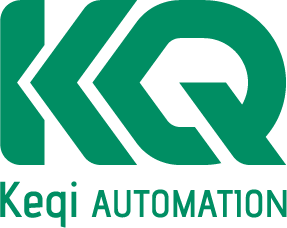Understanding Hot Melt Gluing Systems: The Backbone of Efficient Packaging
Release time:
2025-07-31
Source:
---
In the realm of manufacturing and packaging machinery, the hot melt gluing system stands out as a critical component that significantly enhances operational efficiency. These systems utilize thermoplastic adhesives that are applied in a molten state, offering a quick bonding solution for various materials. Understanding how hot melt gluing systems function can aid manufacturers in optimizing t
---
In the realm of manufacturing and packaging machinery, the hot melt gluing system stands out as a critical component that significantly enhances operational efficiency. These systems utilize thermoplastic adhesives that are applied in a molten state, offering a quick bonding solution for various materials. Understanding how hot melt gluing systems function can aid manufacturers in optimizing their production lines and improving product integrity.
Hot melt adhesives are solid at room temperature, but once heated, they become viscous and can be easily spread over surfaces. Upon cooling, they solidify rapidly, creating a strong bond without the need for additional curing time. This quick setting characteristic is particularly beneficial in high-speed production environments, where time is of the essence.
One of the primary advantages of hot melt gluing systems is their versatility. They can bond a wide range of materials, including paper, cardboard, plastics, and metal. This adaptability makes them ideal for various applications in the packaging sector, such as carton sealing, label application, and product assembly. Companies benefit from the ability to use a single adhesive solution for multiple tasks, simplifying inventory management and reducing costs.
Another significant benefit of hot melt adhesives is their environmental performance. Many modern formulations are free from solvents, which means they emit fewer volatile organic compounds (VOCs). This not only contributes to safer working conditions but also aligns with increasing environmental regulations and sustainability goals. Furthermore, hot melt adhesives often lead to less waste compared to traditional adhesive methods, as they can be applied precisely where needed without excess run-off.
The application methods of hot melt gluing systems vary, with options including manual guns, automatic dispensers, and bulk systems. Each method can be tailored to fit specific production needs, enabling manufacturers to choose the most efficient application technique based on their operational scale and product requirements.
Additionally, advancements in technology have led to the development of smarter hot melt systems equipped with programmable controls. These innovations allow for better temperature management, precise adhesive application, and integration with other machinery, further enhancing productivity and reducing material waste.
In conclusion, hot melt gluing systems are more than just adhesive solutions; they are integral to improving efficiency in manufacturing and packaging processes. By embracing these systems, businesses can streamline their operations, reduce costs, and maintain high product quality. As industries continue to evolve, understanding and implementing advanced hot melt technologies will be crucial for staying competitive in the marketplace.
In the realm of manufacturing and packaging machinery, the hot melt gluing system stands out as a critical component that significantly enhances operational efficiency. These systems utilize thermoplastic adhesives that are applied in a molten state, offering a quick bonding solution for various materials. Understanding how hot melt gluing systems function can aid manufacturers in optimizing their production lines and improving product integrity.
Hot melt adhesives are solid at room temperature, but once heated, they become viscous and can be easily spread over surfaces. Upon cooling, they solidify rapidly, creating a strong bond without the need for additional curing time. This quick setting characteristic is particularly beneficial in high-speed production environments, where time is of the essence.
One of the primary advantages of hot melt gluing systems is their versatility. They can bond a wide range of materials, including paper, cardboard, plastics, and metal. This adaptability makes them ideal for various applications in the packaging sector, such as carton sealing, label application, and product assembly. Companies benefit from the ability to use a single adhesive solution for multiple tasks, simplifying inventory management and reducing costs.
Another significant benefit of hot melt adhesives is their environmental performance. Many modern formulations are free from solvents, which means they emit fewer volatile organic compounds (VOCs). This not only contributes to safer working conditions but also aligns with increasing environmental regulations and sustainability goals. Furthermore, hot melt adhesives often lead to less waste compared to traditional adhesive methods, as they can be applied precisely where needed without excess run-off.
The application methods of hot melt gluing systems vary, with options including manual guns, automatic dispensers, and bulk systems. Each method can be tailored to fit specific production needs, enabling manufacturers to choose the most efficient application technique based on their operational scale and product requirements.
Additionally, advancements in technology have led to the development of smarter hot melt systems equipped with programmable controls. These innovations allow for better temperature management, precise adhesive application, and integration with other machinery, further enhancing productivity and reducing material waste.
In conclusion, hot melt gluing systems are more than just adhesive solutions; they are integral to improving efficiency in manufacturing and packaging processes. By embracing these systems, businesses can streamline their operations, reduce costs, and maintain high product quality. As industries continue to evolve, understanding and implementing advanced hot melt technologies will be crucial for staying competitive in the marketplace.
Next Page
How to Setup Tape Applicator Head
2025-11-08

